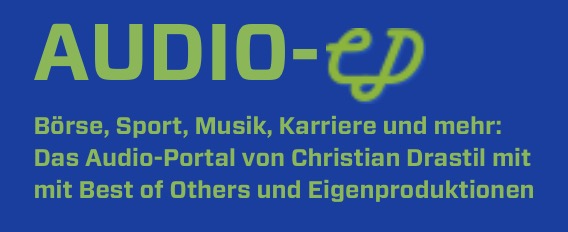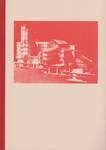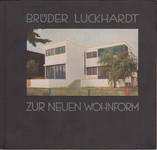Birimian Limited: Erweiterung der hochgradigen Lithiumlagerstätte Goulamina
Birimian Limited: Erweiterung der hochgradigen Lithiumlagerstätte Goulamina
15.03.2017, 57391 Zeichen
Birimian Limited: Erweiterung der hochgradigen Lithiumlagerstätte Goulamina
- Aktualisierte Mineralressource Goulamina;
- 27,8 Mio. Tonnen mit 1,42 % Li2O (393.000 t enthaltenes Li2O)
- Vorläufige Ressourcenschätzung bestätigt beachtliche hochgradige oberflächennahe Erweiterung der Projektressourcen.
- Hochstufung der Ressourcenkategorien und weitere Ressourcenerweiterung werden nach Hinzunahme der noch ausstehenden Bohrergebnisse Anfang Mai 2017 erwartet.
- Ausgezeichnetes Potenzial um signifikante Tonnagen an in geringer Tiefe lagernder hochgradiger Lithiumvererzung durch weitere Bohrungen hinzuzufügen.
- Vormachbarkeitsstudie im Zeitplan für Abschluss im Juniquartal 2017.
Birimian Limited (ASX: BGS) („Birimian“ oder das „Unternehmen“ –- http://www.commodity-tv.net/c/mid,2697,Company_Presentation/?v=297188) berichtet eine Aktualisierung der Mineralressourcenschätzung für die Lagerstätte Goulamina auf ihrem Lithiumprojekt Bougouni in Mali.
Die Mineralressource auf Goulamina umfasst jetzt 27,8 Mio. Tonnen mit 1,42 % Li2O für 393.000 Tonnen enthaltenes Li2O (Tabelle 1). Dies ist beinahe eine Verdopplung der früheren Schätzung des enthaltenen Lithiums und bestätigt weiter, dass Goulamina heute eine der weltweit höchst gradigsten Lithiumlagerstätten von signifikanter Größe in Festgestein ist.
Birimians Managing Director Kevin Joyce äußerte sich zu diesem Meilenstein: „Die jüngste Ressourcenschätzung ist ein herausragendes Ergebnis, das die Erweiterungen der Vererzung der West Zone und die neue Entdeckung in der Sangar Zone einschließt. Die Kombination dieser erweiterten Ressourcen mit den erwarteten Hochstufungen der Ressourcenkategorien in der nahen Zukunft wird die Vormachbarkeitsstudie auf dem Projekt unterstützen, die zurzeit durchgeführt wird.
Die gegenwärtigen Ressourcen liegen weit über unseren anfänglichen Erwartungen und übertreffen jetzt das ursprüngliche Explorationsziel des Unternehmens für enthaltenes Lithium. Entscheidend ist, dass ein signifikantes Potenzial für eine weitere Ausdehnung der Ressource Goulamina besteht.
Birimian hat einen soliden Barmittelbestand mit ausreichend Kapital zur Finanzierung von Entwicklungsaktivitäten bis zum Abschluss der Vormachbarkeitsstudie auf dem Projekt, der im Juniquartal erwartet wird.
Mineralressourcenschätzung
Cube Consulting (Cube) wurde zur Durchführung einer Mineralressourcenschätzung für die Lagerstätte Goulamina beauftragt. Diese Schätzung schließt jetzt Erweiterungen der West Zone und die vor Kurzem entdeckte Sangar Zone im Südwesten ein.
Detaillierte Informationen hinsichtlich der Daten, Qualitätskontrolle und Schätzungsmethodik sind in Anhang 1 – JORC Tabelle1, Abschnitte 1 bis 3 dokumentiert.
Die kombinierten Ressourcen, die in den Vertrauenskategorien „angezeigt“ und „geschlussfolgert“ geschätzt wurden, sind in Tabelle 1 zu sehen. Das Ressourcengebiet im Pegmatit der Main Zone wurde nicht neu modelliert und bleibt unverändert gegenüber der ersten Ressourcenschätzung (Pressemitteilung vom 27. Oktober 2016).

Tabelle 1. Klassifizierungen der Mineralresource Goulamina
Birimian lieferte die Hauptinformationsquellen, die im Rahmen dieser Mineralressourcenschätzung verwendet wurden einschließlich Bohrungsdatensammlungen, eine topografische Oberfläche, Kartierungsinformationen und eine geologische Interpretation der vererzten Pegmatite. Zusätzliche 29 Bohrungen wurden in die aktualisierte Schätzung aufgenommen. Diese Bohrungen ergänzen die 51 Bohrungen, welche die Grundlage für das erste Ressourcenmodell bildeten.
Während der Ressourcenschätzung standen für ungefähr 65 Bohrungen die Analysenergebnisse noch aus und sie wurden nicht in die aktuelle Ressourcenschätzung aufgenommen. Diese Bohrungen schließen einige Erweiterungsbohrungen auf der Main und West Zone ein, sind aber zum größten Teil Infill-Bohrungen in Abständen von 25m, die zur Verbesserung des Vertrauens in die Geologie und die Ressource ausgelegt wurden. Eine weitere Ressourcenerweiterung und Hochstufungen der Ressourcenkategorien sind wahrscheinlich, wenn diese Bohrungen in eine nachfolgende Schätzung aufgenommen werden, die Anfang Mai erwartet wird.
Die Mineralressourcen wurden durch Rückspülbohrungen (Reverse Circulation, RC) und Kernbohrungen (Diamond Drilling, DD) abgegrenzt. Der Großteil der neuen Bohrungen, die in die Schätzung aufgenommen wurden, wurde in den Pegmatitzonen West und Sangar in Abständen von 50 m x 50 m niedergebracht. Diese Abstände sind zur Bestimmung der Kontinuität der Geologie und des Gehalts zur Ausweisung einer Ressource in der Kategorie geschlussfolgert angemessen.
Der Spodumen (Lithium) -Pegmatit auf Goulamina kommt als drei gut definierten im Allgemeinen parallelen und sehr kontinuierlichen Dykes (Intrusionsgänge) vor; Main Zone, West Zone und Sangar Zone (Abbildung 1, 2 und 3). Querschneidende vererzte Dykes, die in Aufschlüssen und in den Bohrungen identifiziert wurden, sind nicht so gut begrenzt und wurden zu diesem Zeitpunkt nicht in die klassifizierten Ressourcen eingeschlossen.
Vererzte Domänen für getrennte Pegmatit-Dykes wurden in Profilschnitten digitalisiert und dann als Drahtgitter dargestellt, um Festkörper zu generieren. Es besteht ein sehr starker Zusammenhang zwischen dem vererzten Teil der Pegmatit-Dykes und dem gesamten vererzten Dyke-Abschnitt. Nur sehr wenig Pegmatitmaterial hat keine signifikant erhöhten Lithiumgehalte. Folglich stimmen die Grenzen der Vererzung im Allgemeinen mit den lithologischen Grenzen der Dykes überein. Drahtgitter wurden zur Bestückung des Blockmodells und durch herkömmliches Kriging-Verfahren interpolierte Li2O-Gehalte verwendet.
Es wurde angenommen, dass die Ressource im Tagebauverfahren abgebaut wird, das von den konzeptionellen Bergbaustudien unterstützt wird. Die früheren metallurgischen Studien bieten eine ausreichende Basis für die Annahme hinsichtlich der metallurgischen Zugänglichkeit und der Bestimmung angemessener Perspektiven für eine eventuelle wirtschaftliche Extraktion.

Abbildung 1. Goulamina-Lagerstätte. Planansicht des Lithium-Pegmatits mit Lage der Bohrungen


Abbildung 2. Lagerstätte Goulamina – Profilschnitte Main Zone und West Zone.

Abbildung 3. Lagerstätte Goulamina – Profilschnitt Sangar Zone
Goulamina – eine hochgradige Lithiumlagerstätte mit beträchtlichen Tonnagen
Die aktualisierte Ressourcenschätzung auf Goulamina bestätigt eine hochgradige Lithiumlagerstätte mit beträchtlichen Tonnagen.
Die Gehalt-Tonnage-Kurve für die aktualisierten geschlussfolgerten Ressourcen ist in Abbildung 4 zu sehen. Die Gesamtressource wird für einen Cut-off-Gehalt von 0% Li2O angegeben. Bei höheren Cut-off-Gehalten variieren die Tonnagen der Vererzung nicht beträchtlich, was den robusten Gehalt und die gute Kontinuität der modellierten Vererzung bestätigt. Die gesteigerte Ressourcentonnage hat zu einer geringen Abnahme des Ressourcengehalts geführt, aber das enthaltene Lithium beachtlich erhöht. Der Ressourcengehalt liegt weiterhin beachtlich über dem geschätzten Cut-Off-Gehalt für den Abbau von 0,82% Li2O (Pressemitteilung vom 13. März 2017). Die jüngste Ressourcenschätzung erfüllt Meilenstein Eins des Leistungsanreizplans des Managements.
Die Vererzung ist in allen drei Zonen weiterhin offen und im 250 Quadratkilometer großen Projektgebiet besteht hervorragendes ungenutztes Potenzial. Birimian ist weiterhin zuversichtlich, dass es den Lithiumbestand auf Goulamina im Laufe der weiteren Projektentwicklungsarbeiten kontinuierlich steigern wird.

Abbildung 4. Goulamina West Zone Gehalt-Tonnage-Kurve..
Weitere Planung
Am 30. Januar 2017 hat Birimian bekannt gegeben, dass die Scoping-Studie für das Lithiumprojekt Bougouni das hervorragende Potenzial des Projekts bestätigt hat, weshalb nun eine Vormachbarkeitsstudie (Pre‐Feasibility Study, PFS) durchgeführt werden soll. Die Ergebnisse der Scoping-Studie lassen darauf schließen, dass die Goulamina-Lagerstätte kostengünstig im Tagebauverfahren abgebaut und eine gestufte Aufbereitungsanlage geplant werden kann. Dabei profitiert man von niedrigen Verhältnissen Abraum:Erz, hochgradiger Vererzung an der Oberfläche und niedrigen Betriebskosten in Mali. Die PFS ist weiterhin im Zeitplan für eine Fertigstellung im Laufe des Juniquartals 2017.
Die Bohrarbeiten auf dem Projekt wurden kurz unterbrochen, da das Unternehmen für weitere detaillierte Arbeiten und andere technische Studien hinsichtlich der Ressourcenschätzung Analysenergebnisse erwartet. Angesichts des konstanten Fortschritts bei den jüngsten Bohrungen und der längeren Wartezeit bis zum Erhalt der Analysenergebnisse wird ein weiteres Update des Ressourcenmodells jetzt Anfang Mai erwartet. Laut Erwartungen wird diese Schätzung alle Ergebnisse der Infill-Bohrungen zur Unterstützung der signifikanten Hochstufungen der Ressourcenkategorien einschließen und die detaillierten Vormachbarkeitsstudien erleichtern.
Gleichzeitig zum laufenden Bohrprogramm arbeitet Birimian an weiteren Studien, um die PFS abschließen zu können. Die Strategie des Unternehmens ist die Beschleunigung der Entwicklung der zurzeit abgegrenzten Ressourcen auf dem Projekt Bougouni, statt größere Ressourcenerweiterungen durch Bohrungen anzuvisieren. Zurzeit wird die nächste Phase der Entwicklungsbohrungen geplant. Das Programm hat die folgenden Ziele:
- Weiteres Upgrade der Ressourcenkategorien.
- Bestätigung geotechnischer Parameter für die Planung einer Tagebaumine.
- Bestätigung von Standorten für Aufbereitungsanlage, damit verbundene Infrastruktur, Abraumhalde und Tailings-Lagerplatz.
Digby Wells Environmental („Digby Wells“) hat die Feldarbeiten hinsichtlich der nächsten Phase der detaillierten Nachhaltigkeitsstudien auf dem Projekt und den weiteren Gemeindebereichen abgeschlossen. Dies ist von Wichtigkeit, da die Ergebnisse die laufenden technischen Studien und die Planung der Entwicklungsbohrungen erleichtern werden. Dadurch wird es Digby Wells möglich sein, die Terms of Reference for the Environmental and Social Impact Assessment („ESIA“, Richtlinien für Umweltverträglichkeitsprüfung und Prüfung der sozialen Auswirkungen) zu erstellen. In diesem Stadium wird vorgeschlagen, die Richtlinien für das Projekt der Regierung Ende April vorzustellen. Dies signalisiert den formellen Beginn der ESIA für das Projekt und mündet im Genehmigungsprozess der Mine.
Birimian möchte die wirtschaftliche Nutzbarkeit von Bougouni beschleunigen. Folglich werden die nächsten wichtigen Meilensteine die metallurgischen Testarbeiten und eine aktualisierte Ressourcenschätzung sein. Das Unternehmen rechnet damit, dass sie Ende dieses Quartals verfügbar sein werden. Im Anschluss wird die Fertigstellung der PFS im Juniquartal 2017 erwartet. Dies wird es dem Unternehmen erlauben, die Projektfinanzierung und Abnahmeabkommen parallel zum Minengenehmigungsverfahren weiterzuverfolgen.
Für weitere Informationen kontaktieren Sie bitte:
Kevin Joyce
Managing Director
08 9286 3045
In Europa:
Swiss Resource Capital AG
Jochen Staiger
www.resource.capital.ch
Erklärung der qualifizierten Personen
Die Informationen in dieser Meldung, die sich auf Explorationsergebnisse und das Explorationsziel beziehen, basieren auf Informationen, die von oder unter der Leitung von Kevin Anthony Joyce erstellt wurden. Herr Joyce ist Managing Director von Birimian Limited und ein Mitglied des Australian Institute of Geoscientists. Herr Joyce verfügt über ausreichende Erfahrung, die für diese Art von Vererzung und Lagerstätte sowie für seine Tätigkeiten erforderlich ist, um als qualifizierte Person gemäß der Ausgabe von 2012 des Australasian Code for Reporting of Exploration Results, Mineral Resources and Ore Reserves („JORC Code“) definiert werden zu können. Herr Joyce erlaubt das Hinzufügen von Material zu diesem Bericht, das auf seinen Informationen basiert und in Form und Kontext erscheint.
Die Informationen in dieser Meldung, die sich auf Mineralressourcen beziehen, basieren auf Informationen, die von oder unter der Leitung von Matt Bampton erstellt wurden. Herr Bampton ist ein Mitglied des Australian Institute of Mining and Metallurgy und ein Mitglied des Australian Institute of Geoscientists. Herr Bampton ist ein Vollzeitbeschäftigter von Cube Consulting Pty Ltd. und verfügt über ausreichende Erfahrung, die für diese Art von Vererzung und Lagerstätte sowie für seine Tätigkeiten erforderlich ist, um als qualifizierte Person gemäß der Ausgabe von 2012 des Australasian Code for Reporting of Exploration Results definiert werden zu können. Herr Bampton erlaubt das Hinzufügen von Material zu diesem Bericht, das auf seinen Informationen basiert und in Form und Kontext erscheint.
Zuvor gemeldete Ergebnisse
Diese Meldung enthält Informationen hinsichtlich früherer Explorationsergebnisse beim Projekt Bougouni. Das Unternehmen bestätigt, dass keine anderen neuen Informationen oder Daten vorliegen, die sich erheblich auf die in der ursprünglichen Marktmitteilung enthaltenen Informationen auswirken könnten, und dass sich alle grundlegenden Annahmen und technischen Parameter nicht grundlegend geändert haben. Das Unternehmen bestätigt, dass die Form und der Kontext der enthaltenen Darbringung der Ergebnisse der Competent Person im Vergleich zur Marktmitteilung nicht grundlegend geändert wurden.
Zukunftsgerichtete Aussagen
Aussagen hinsichtlich Pläne in Zusammenhang mit den Mineralkonzessionsgebieten des Unternehmens sind zukunftsgerichtete Aussagen. Es kann keine Garantie abgegeben werden, dass die Pläne des Unternehmens hinsichtlich der Erschließung seiner Mineralkonzessionsgebiete wie erwartet umgesetzt werden können. Es kann keine Garantie abgegeben werden, dass das Unternehmen in der Lage sein wird, das Vorkommen von Minerallagerstätten zu bestätigen, dass sich eine Mineralisierung als wirtschaftlich herausstellen wird oder dass eine Mine in einem der Mineralkonzessionsgebiete des Unternehmens erschlossen werden kann.
Die Ausgangssprache (in der Regel Englisch), in der der Originaltext veröffentlicht wird, ist die offizielle, autorisierte und rechtsgültige Version. Diese Übersetzung wird zur besseren Verständigung mitgeliefert. Die deutschsprachige Fassung kann gekürzt oder zusammengefasst sein. Es wird keine Verantwortung oder Haftung: für den Inhalt, für die Richtigkeit, der Angemessenheit oder der Genauigkeit dieser Übersetzung übernommen. Aus Sicht des Übersetzers stellt die Meldung keine Kauf- oder Verkaufsempfehlung dar! Bitte beachten Sie die englische Originalmeldung auf www.sedar.com , www.sec.gov , www.asx.com.au/ oder auf der Firmenwebsite!
ASX Additional Information - Material Assumptions
The following is a summary of Material Information used to estimate the Mineral Resource as required by Listing Rule 5.8.1 and JORC 2012 Reporting Guidelines.
Mineral Tenement and Land Tenure Status
The deposit lies within the Torakoro Research Permit which is owned 100% by Timbuktu Ressources, a wholly owned Malian subsidiary of Birimian Limited. The mineral property is in good standing and there is no known impediment to obtaining a license to operate.
Geology
The project area is located within the Bougouni region of the southern Mali, where broadly north-south trending belts of Birimian-aged (Paleoproterozoic) metavolcanic and metasedimentary rocks are intruded by syn-and post-orogenic granitoids.
Within the Project area, outcrop is limited and basement geology is therefore poorly understood. Regolith typically comprises a surficial transported gravel horizon (locally termed Cuirasse) overlying a thin lateritic weathering profile. Mapping indicates NE-striking metapelite and metagreywacke rocks in the north and eastern parts of the property. The southern portion of the project area is dominated by granodiorite.
All pegmatite bodies contain anomalous or significant amounts of the mineral spodumene (a lithium-bearing pyroxene), along with the other major minerals of quartz and feldspar (albite and microcline); From the geological logging, there are also accessory amounts of muscovite, tourmaline, apatite, and biotite at the granite contacts.
Drilling Techniques and Hole Spacing
Holes were drilled in two phases, from May to September 2016, and December 2016 to February 2017. In total 80 holes inform the current resource estimate.
RC drilling was completed by Foraco Drilling and International Drilling Company (IDC), using nominally 5.5” diameter equipment, with a face sampling downhole hammer. The Foraco rig had an outboard compressor, with specifications of 1100CFM@350PSI. The IDC rig had an onboard compressor with specifications of 1150CFM@500PSI
Core drilling was completed using equipment supplied and operated by Foraco Drilling and IDC. All holes are standard HQ sized holes (core diameter 64mm). DD holes are a combination of some drilled from surface and some as diamond tails on RC holes (including extensions to previously drilled Phase 1 holes).
Sampling
All samples collected from the RC rig were collected at 1m downhole intervals. Samples were split into pre-numbered calico bags at the rig using a 3-stage riffle splitter yielding a sample of between 3 to 5 kilograms. In addition to the 1m sample, duplicate samples were taken every 20m downhole. Blanks and standards were inserted into the sample stream at a rate of 1:40 for Blanks, and 1:40 for Standards.
All data is documented in a sampling ledger, including hole number, date drilled, sample id, depths from and to, sample condition, sample type, percentage sample return and all certified standards blanks and duplicates.
Drill core was sawn in half along its long axis. One half of the drill core was taken for geochemical analysis. All samples were collected at 1m intervals down the hole. 100% core recoveries were typically achieved.
Sample Analysis
Sample preparation work was conducted in the ALS Laboratory in Ouagadougou, Burkina Faso. At the laboratory, samples were weighed, dried and crushed to -2mm in a jaw crusher. A 1.0kg split of the crushed sample was subsequently pulverised in a ring mill to achieve a nominal pulp particle size of 85% passing 75μm. Sample sizes and laboratory preparation techniques are considered to be appropriate.
After pulverisation, sub-samples were sent to ALS Laboratory in Perth for assay. Analysis for lithium and a suite of other elements was undertaken by ICP-AES, after a sodium peroxide (Na2O2) fusion – ALS Method ME-ICP89. Some of the multi-element analysis uses a MS finish – ALS Method ME-MS91. This fusion technique is considered to be a “total” dissolution technique for lithium-bearing silicate minerals. Detection limits for lithium are 0.01-10%.
Estimation Methodology
Interpreted sections were wireframed using Surpac software to create 3D solids for each pegmatite domain within the resource area. The drillhole data was sliced on 50m spaced sections for modelling of the geology and the mineralised envelopes. Solids were constructed for 4 discreet pegmatite dykes, as well as for the near surface colluvium and lateritic material.
Mineralisation in the Main Zone and West Zone pegmatites was composited to 3m downhole intervals to reduce the variability inherent in raw samples or a smaller composite length relative to estimation resource model block dimensions.
Surpac software was used for the modelling and estimation, with SuperVisor software used to conduct geostatistical analysis. The main pegmatite domains in the block model were estimated using interpolation of grade via Ordinary Kriging (OK), which was considered to be an acceptable method given the strong geological control, the drilling density and the data distribution downhole.
A single block model was created by Cube with dimensions extended out to fully cover all of the mineralisation, plus surrounds that may be contained within pit optimisation shells. The parent block size used is 20mN x 20mE x 5mRL and sub-blocked to 1.25mN x 2.5mE x 2.5mRL.
Resource Classification
A range of criteria were considered by Cube when addressing the suitability of the classification boundaries. These criteria include:
- Geological continuity and volume;
- Drill spacing and drill data quality;
- Modelling technique; and
- Estimation properties including search strategy, number of informing composites, average distance of composites from blocks and kriging quality parameters.
Blocks have been classified as Indicated or Inferred, mostly based on drill data spacing in combination with kriging parameters.
Cut-off Grade
For the global resource estimation, no lower cutoff grade for reporting is used, as the model is essentially developed within a geological boundary, and the resource incorporates everything within the modelled pegmatite dykes.
Mining and Metallurgy
Conceptual mining studies are based on open cut mining methods using a contract mining fleet and conventional drill and blast mining methods. Limited inspection of core photography indicates that ground conditions are suitable for this mining method.
The resource has been trimmed by intersecting with a pit shell based on a Whittle optimisation at a revenue factor (USD$650/t for a nominal 6% Li2O concentrate). Material falling outside of this shell is considered to not meet reasonable prospects for eventual economic extraction. Reasonable prospects for eventual economic extraction have been determined with reference to the results of previous Whittle optimization studies, and the depth of the selected open pit shell (at a revenue factor of USD$650/t for a nominal 6% Li2O concentrate) was used as an analogy to help limit the depth for reporting the Sangar Zone.
The criteria for assumptions and predictions regarding metallurgical amenability – required to determine reasonable prospects for eventual economic extraction – are based on the bulk sampling and test program undertaken in 2008 by CSA Global (UK), work that was commissioned and funded by the World Bank as part of the SYSMIN economic development program. CSA Global undertook systematic sampling of outcropping material at Goulamina to collect a representative bulk sample comprising 3,150kg of material, which was subsequently crushed and split to 750kg for detailed processing test work. This work included evaluations of screen sizing to optimize spodumene (lithium) recoveries and preliminary dense media separation tests. The results of this study indicated good spodumene recoveries and a high mass yield, to produce a high quality chemical grade spodumene concentrate.
JORC Code, 2012 Edition – Table 1
Section 1 - Sampling Techniques and Data
Criteria | JORC Code explanation | Commentary |
|---|---|---|
Sampling techniques | Nature and quality of sampling (eg cut channels, random chips, or specific specialised industry standard measurement tools appropriate to the minerals under investigation, such as down hole gamma sondes, or handheld XRF instruments, etc). These examples should not be taken as limiting the broad meaning of sampling. Include reference to measures taken to ensure sample representivity and the appropriate calibration of any measurement tools or systems used. Aspects of the determination of mineralisation that are Material to the Public Report. In cases where ‘industry standard’ work has been done this would be relatively simple (eg ‘reverse circulation drilling was used to obtain 1 m samples from which 3 kg was pulverised to produce a 30 g charge for fire assay’). In other cases more explanation may be required, such as where there is coarse gold that has inherent sampling problems. Unusual commodities or mineralisation types (eg submarine nodules) may warrant disclosure of detailed information. | Diamond Drill Core (DD) and Reverse Circulation (RC) chips are the two main sample types. RC drill holes were routinely sampled at 1m intervals down the hole, with samples collected at the drill rig by riffle splitting drill spoils to collect a nominal 2.5 – 4kg sub sample, with an additional 50% split for material > 5 kg. Routine standard reference material, sample blanks, and sample duplicates were inserted or collected at every 10th sample in the sample sequence for RC drill holes. Nominal 2.5kg sub samples were collected from half sawn HQ sized diamond drill core, routinely sampled at 1m intervals down the hole. Routine standard reference material and sample blanks were inserted/collected at every 20th sample in the sample sequence for DD drill holes. All samples were submitted to ALS Bamako and subsequently forwarded to ALS Ouagadougou for preparation. Analysis was undertaken at ALS Perth by method ME-ICP89 |
Drilling techniques | Drill type (eg core, reverse circulation, open-hole hammer, rotary air blast, auger, Bangka, sonic, etc) and details (eg core diameter, triple or standard tube, depth of diamond tails, face-sampling bit or other type, whether core is oriented and if so, by what method, etc). | Drill holes were generally angled at -60° towards 270° (WGS84_29N grid) RC drilling equipment is nominally 5.5” diameter, with a face sampling down hole hammer. RC drilling was undertaken using the following equipment – o Purpose built RC Rig (Foraco Drilling) with an outboard compressor; specifications of 1100CFM@350PSI o Schramm 685 RC Rig (IDC Drilling) with an onboardcompressor; specifications of 1150CFM@500PSI DD holes are standard tube HQ sized holes (core diameter 64mm) DD holes were drilled using the following equipment – o Purpose built drill rig supplied and operated by Foraco Drilling o KL900 rig supplied and operated by IDC o Atlas Copco CT14 rig supplied and operated by IDC DD holes are a combination of some drilled from surface (lengths varied between 21m and 110m), and some as diamond tails on RC holes (lengths varied between 100m and 195m). Core Orientations were performed with a Reflex ACT II RD rapid descent core orientation tool |
Drill sample recovery | Method of recording and assessing core and chip sample recoveries and results assessed. Measures taken to maximise sample recovery and ensure representative nature of the samples. Whether a relationship exists between sample recovery and grade and whether sample bias may have occurred due to preferential loss/gain of fine/coarse material. | A qualitative estimate of sample recovery was done for each sample metre collected from the drill rig for RC holes. Riffle split samples were weighed to ensure consistency of sample size and to monitor sample recoveries. A quantitative measure of sample recovery was done for each run of drill core for DD holes. Drill sample recovery in the DD holes approximates 100% in mineralised zones. Overall, drill sample recovery and quality is considered to be adequate for the RC drilling, and is considered to be excellent for the DD holes. There is the possibility of some low-level contamination from the drill bits and rods on subsequent iron assays. |
Logging | Whether core and chip samples have been geologically and geotechnically logged to a level of detail to support appropriate Mineral Resource estimation, mining studies and metallurgical studies. Whether logging is qualitative or quantitative in nature. Core (or costean, channel, etc) photography. The total length and percentage of the relevant intersections logged. | All drill sample intervals were geologically logged by Company Geologists. Where appropriate, geological logging recorded the abundance of specific minerals, rock types and weathering using a standardized logging system. For RC holes, a small sample of washed drill material was retained in chip trays for future reference and validation of geological logging, and an additional 100g of drill material was retained in plastic bags for the same purpose. For DD holes, all core was photo-graphed both Wet and Dry. For most holes, the entire drill hole was logged and sampled. Barren granite away from the pegmatite dykes was not routinely sampled. |
Sub-sampling techniques and sample preparation | If core, whether cut or sawn and whether quarter, half or all core taken. If non-core, whether riffled, tube sampled, rotary split, etc and whether sampled wet or dry. For all sample types, the nature, quality and appropriateness of the sample preparation technique. Quality control procedures adopted for all sub-sampling stages to maximise representivity of samples. Measures taken to ensure that the sampling is representative of the in situ material collected, including for instance results for field duplicate/second-half sampling. Whether sample sizes are appropriate to the grain size of the material being sampled. | RC 1m samples were riffle split at the drill rig, and routine field sample duplicates were taken to evaluate whether samples were representative. Drill core was sawn in half along its long axis. One half of the drill core was taken for geochemical analysis. All samples were collected at 1m intervals down the hole. Sample preparation was undertaken by ALS Ouagadougou laboratory. At the laboratory, samples were weighed, dried and crushed to -2mm in a jaw crusher. A 1.0kg split of the crushed sample was pulverised in a steel ring mill to achieve a nominal particle size of 85% passing 75μm. Sample sizes and laboratory preparation techniques are considered to be appropriate for lithium, but may have introduced a small level of contamination for iron from the sample preparation equipment. |
Quality of assay data and laboratory tests | The nature, quality and appropriateness of the assaying and laboratory procedures used and whether the technique is considered partial or total. For geophysical tools, spectrometers, handheld XRF instruments, etc, the parameters used in determining the analysis including instrument make and model, reading times, calibrations factors applied and their derivation, etc. Nature of quality control procedures adopted (eg standards, blanks, duplicates, external laboratory checks) and whether acceptable levels of accuracy (ie lack of bias) and precision have been established. | Analysis for lithium and a suite of other elements was undertaken at ALS Perth by ICPAES after Sodium Peroxide Fusion. Detection limits for lithium (0.01 -10%) Sodium Peroxide fusion is considered a “total” assay technique for lithium No geophysical tools or other non-assay instrument types were used in the analyses reported. Review of routine standard reference material and sample blanks suggest there are no significant analytical bias or preparation errors in the reported analyses. Lithium assays for the RC field sample duplicates compare well with the original sample and are consistent with the style of mineralisation being evaluated. The analyses are considered to be representative of the geological zones which were sampled. No field duplicates were taken for the DD program. Internal laboratory QAQC checks are reported by the laboratory, including sizing analysis to monitor preparation. Review of the internal laboratory QAQC suggests the laboratory is performing within acceptable limits. No samples were analysed at an umpire lab. |
Verification of sampling and assaying | The verification of significant intersections by either independent or alternative company personnel. The use of twinned holes. Documentation of primary data, data entry procedures, data verification, data storage (physical and electronic) protocols. Discuss any adjustment to assay data. | Drill hole data is compiled and digitally captured by company geologists. The compiled digital data is verified and validated by the Company’s database consultant before loading into the drill hole database. No specific twin holes were drilled. Reported results are compiled by the Company’s database consultant and the Managing Director. There were no adjustments to assay data. |
Location of data points | Accuracy and quality of surveys used to locate drill holes (collar and down-hole surveys), trenches, mine workings and other locations used in Mineral Resource estimation. Specification of the grid system used. Quality and adequacy of topographic control. | Drill hole collars were set out in UTM grid WGS84_Zone29N Drill hole collars were positioned using hand held GPS. RC and DD holes are routinely surveyed for orientation at approximately 50m-spaced intervals down the hole, using the Reflex EZ-TRAC electronic multi-shot system SRTM elevation data was used to establish topographic control where appropriate. Locational accuracy at collar and down the drill hole is considered appropriate for this stage of resource estimation. |
Data spacing and distribution | Data spacing for reporting of Exploration Results. Whether the data spacing and distribution is sufficient to establish the degree of geological and grade continuity appropriate for the Mineral Resource and Ore Reserve estimation procedure(s) and classifications applied. Whether sample compositing has been applied. | The majority of drilling is at 50m x 50m centres, with deeper holes at 100m x 50m spacing, and some minor infill to approximately 50m x 25m on selected sections. This spacing is adequate to determine the geological and grade continuity for reporting of Mineral Resources. Compositing to 3m lengths has been applied for the estimation of Mineral Resources |
Orientation of data in relation to geological structure | Whether the orientation of sampling achieves unbiased sampling of possible structures and the extent to which this is known, considering the deposit type. If the relationship between the drilling orientation and the orientation of key mineralised structures is considered to have introduced a sampling bias, this should be assessed and reported if material. | Mineralisation at Goulamina outcrops at surface and the steeply dipping geometry of mineralisation is therefore well-defined. Drilling orientation has not biased the sampling. |
Sample security | The measures taken to ensure sample security. | Samples are stored on site prior to road transport by Company personnel to the ALS Laboratory in Bamako, Mali. Chain of custody procedures exist for the transport of material between ALS Laboratories (Mali to Burkina Faso to Perth). |
Audits or reviews | The results of any audits or reviews of sampling techniques and data. | Cube Consulting undertook a site visit during RC drilling operations to review the sampling techniques. There has been no external audit or review of the Company’s sampling techniques for diamond drilling. |
Section 2 - Reporting of Exploration Results
Criteria | JORC Code explanation | Commentary |
|---|---|---|
Mineral tenement and land tenure status | Type, reference name/number, location and ownership including agreements or material issues with third parties such as joint ventures, partnerships, overriding royalties, native title interests, historical sites, wilderness or national park and environmental settings. The security of the tenure held at the time of reporting along with any known impediments to obtaining a licence to operate in the area. | The reported results are from an area within the Torakoro Permit, which is held 100% by Timbuktu Resources SARL, a Malian subsidiary of Birimian Limited Tenure is in good standing. |
Exploration done by other parties | Acknowledgment and appraisal of exploration by other parties. | The area which is presently covered by the Torakoro Permit was explored intermittently by government agencies in the period 1990 to 2008. Exploration consisted of soil sampling and mapping for gold. In 2007-2008 an evaluation of the commercial potential for lithium at Goulamina was undertaken by CSA Global as part of the SYSMIN 7 economic development program. CSA undertook mapping and bulk sampling of the Goulamina outcrop but did not undertake drilling. Bulk sampling and preliminary processing testwork confirmed the viability of the pegmatite at Goulamina to produce a high quality chemical grade lithium concentrate |
Geology | Deposit type, geological setting and style of mineralisation. | Pegmatite Hosted Lithium Deposits are the target for exploration. This style of mineralisation typically forms as dykes and sills intruding or in proximity to granite host rocks. Surficial geology within the project area typically consists of indurated gravels forming plateaux, and broad depositional plains consisting of colluvium and alluvial to approximately 5m vertical depth. Lateritic weathering is common away from the Goulamina deposit and in the broader project area. |
Drill hole Information | A summary of all information material to the understanding of the exploration results including a tabulation of the following information for all Material drill holes: o easting and northing of the drill hole collar o elevation or RL (Reduced Level – elevation above sea level in metres) of the drill hole collar o dip and azimuth of the hole o down hole length and interception depth o hole length. If the exclusion of this information is justified on the basis that the information is not Material and this exclusion does not detract from the understanding of the report, the Competent Person should clearly explain why this is the case. | All relevant data from 2016 and 2017 drilling programs has been previously released to the market.
|
Data aggregation methods | In reporting Exploration Results, weighting averaging techniques, maximum and/or minimum grade truncations (eg cutting of high grades) and cut-off grades are usually Material and should be stated. Where aggregate intercepts incorporate short lengths of high grade results and longer lengths of low grade results, the procedure used for such aggregation should be stated and some typical examples of such aggregations should be shown in detail. The assumptions used for any reporting of metal equivalent values should be clearly stated. | All relevant data from 2016 and 2017 drilling programs has been previously released to the market.
|
Relationship between mineralisation widths and intercept lengths | These relationships are particularly important in the reporting of Exploration Results. If the geometry of the mineralisation with respect to the drill hole angle is known, its nature should be reported. If it is not known and only the down hole lengths are reported, there should be a clear statement to this effect (eg ‘down hole length, true width not known’). | All relevant data from 2016 and 2017 drilling programs has been previously released to the market |
Diagrams | Appropriate maps and sections (with scales) and tabulations of intercepts should be included for any significant discovery being reported These should include, but not be limited to a plan view of drill hole collar locations and appropriate sectional views. | All relevant data from 2016 and 2017 drilling programs has been previously released to the market
|
Balanced reporting | Where comprehensive reporting of all Exploration Results is not practicable, representative reporting of both low and high grades and/or widths should be practiced to avoid misleading reporting of Exploration Results. | All relevant data from 2016 and 2017 drilling programs has been previously released to the market |
Other substantive exploration data | Other exploration data, if meaningful and material, should be reported including (but not limited to): geological observations; geophysical survey results; geochemical survey results; bulk samples – size and method of treatment; metallurgical test results; bulk density, groundwater, geotechnical and rock characteristics; potential deleterious or contaminating substances. | Density measurements taken by Archimedes Method (water displacement) of core samples from 14 holes, all in unweathered material. Whole core and some half core samples were used for density measurements, but neither coated nor waxed. These measurements were used to determine the bulk density for the Mineral Resource. In addition to lithium (as Li2O), all holes were assayed for a multi-element suite to evaluate the presence of any potential co-product or contaminating material. |
Further work | The nature and scale of planned further work (eg tests for lateral extensions or depth extensions or large-scale step-out drilling). Diagrams clearly highlighting the areas of possible extensions, including the main geological interpretations and future drilling areas, provided this information is not commercially sensitive. | The Mineral Resource estimate will be used to support ongoing economic assessments of the key processing parameters and estimate capital costs, which will be used to define subsequent phases of detailed work at the Bougouni Li Project. An environmental consultancy has completed a preliminary social and environmental assessment, and is currently undertaking the next phase of detailed site based surveys to facilitate a mine permitting process. |
Section 3 - Estimation and Reporting of Mineral Resources
Criteria | JORC Code explanation | Commentary |
|---|---|---|
Database integrity | Measures taken to ensure that data has not been corrupted by, for example, transcription or keying errors, between its initial collection and its use for Mineral Resource estimation purposes. Data validation procedures used. | Drilling database is maintained by Birimian’s database consultant (Rock Solid Data Consultancy) in Datashed software, look-up tables and fixed formatting are used for entering logging, spatial and sampling data for the deposit databases. Sample numbers are uniquely coded and pre-numbered bags used. Data transfer for downhole survey and assaying information is electronic via email. These and other workflow methods minimise the potential of errors. Cube received data directly exported from Datashed in MS Access format, then completed validation checks on the database comparing maximum hole depths checks on all data, duplicate numbering, missing data, and interval error checks using validation rules in MS Excel before importing records into MS Access. Cube then verified the data using visual inspection of the drillholes in Surpac v6.7, in 3D to identify inconsistencies of drill hole traces. |
Site visits | Comment on any site visits undertaken by the Competent Person and the outcome of those visits. If no site visits have been undertaken indicate why this is the case. | Matt Bampton (Senior Consultant – Cube Consulting) who is the Competent Person, conducted a site visit in May 2016, during which time he inspected the Project area including RC drilling, sampling and sample despatch for the receiving laboratory. Notes and photographs were taken along with discussions with site personnel regarding geology and mineralisation of the deposits, procedures, sampling and database procedures, and Quality Control procedures. No major issues were encountered. |
Geological interpretation | Confidence in (or conversely, the uncertainty of ) the geological interpretation of the mineral deposit. Nature of the data used and of any assumptions made. The effect, if any, of alternative interpretations on Mineral Resource estimation. The use of geology in guiding and controlling Mineral Resource estimation. The factors affecting continuity both of grade and geology. | The confidence in the geological interpretation of Main Zone and West Zone of the Goulamina Pegmatites is good as a result of the consistency of intercepts in RC and diamond core drilling programs, and their correlation to the surface outcrops and sub-crops of spodumene-rich pegmatites. There is a very strong correlation between the mineralised portion of the pegmatite dykes and the total dyke intercept. Very little pegmatite material is not significantly elevated in lithium content; thus the mineralisation boundaries generally match the lithological boundaries of the dykes. The confidence in the geological interpretation of the Sangar Zone of the Goulamina Pegmatites is lower, as the minor surface outcrop and sub-crop is supported by only 6 drill-hole intercepts. This confidence is reflected in the resource classification. |
Dimensions | The extent and variability of the Mineral Resource expressed as length (along strike or otherwise), plan width, and depth below surface to the upper and lower limits of the Mineral Resource. | The Goulamina Mineral Resource area has dimensions of 900m (strike length) in three main dykes up to 70m (true width) and 225m (below surface). The maximum depth known to date for the deepest mineralisation is 195m below the surface. |
Estimation and modelling techniques | The nature and appropriateness of the estimation technique(s) applied and key assumptions, including treatment of extreme grade values, domaining, interpolation parameters and maximum distance of extrapolation from data points. If a computer assisted estimation method was chosen include a description of computer software and parameters used. The availability of check estimates, previous estimates and/or mine production records and whether the Mineral Resource estimate takes appropriate account of such data. The assumptions made regarding recovery of by-products. Estimation of deleterious elements or other non-grade variables of economic significance (eg sulphur for acid mine drainage characterisation). In the case of block model interpolation, the block size in relation to the average sample spacing and the search employed. Any assumptions behind modelling of selective mining units. Any assumptions about correlation between variables. Description of how the geological interpretation was used to control the resource estimates. Discussion of basis for using or not using grade cutting or capping. The process of validation, the checking process used, the comparison of model data to drill hole data, and use of reconciliation data if available. | The block model was constructed using interpolation of grade via Ordinary Kriging (OK), with an Inverse Distance method used as an internal check; a global model was considered to be appropriate for the purpose of the model. High grade values were reviewed, but it was considered that application of top-cuts was not required. Mineralised domains for 6 separate pegmatite dykes were digitised in cross-section using 3D strings and then wireframed to generate solids. These were a subset of lithological wireframes of these pegmatite dykes. Drillhole sample data was flagged using domain codes generated from three dimensional mineralisation domains and oxidation surfaces. Sample data was composited to three metre downhole lengths using a best fit-method. Interpolation parameters were set to a minimum number of 12 composites and a maximum number of 24 composites for the estimate. A maximum search ellipse of 150m was used for estimation runs in the reportable resource, with the orientation altered dynamically to reflect the change in orientation of the West Zone pegmatite domain. Computer software used for the modelling and estimation was Surpac v6.7, with SuperVisor software used to conduct geostatistical and variographic analysis. No by-product recoveries were considered; Fe2O3 was estimated, as an element of potential interest in terms of a future spodumene concentrate. The parent block size used is 20mN x 20m E x 5m RL and sub-blocked to 1.25mN x 2.5mE x 2.5mRL. The bulk of the drilling data was on 50m x 50m spaced sections, with limited infill to 25m x 25m spaced sections. No assumptions of selective mining units were made. The mineralised domains acted as a hard boundary to control the Mineral Resource estimate. Block model validation was conducted by the following means: Visual inspection of block model estimation in relation to raw drill data on a section by section basis. Volumetric comparison of the wireframe/solid volume to that of the block model volume for each domain. A global statistical comparisons of input and block grades, and local composite grade (by northing and RL) relationship plots (swath plots), to the block model estimated grade for each domain. Comparison of the (de-clustered) cut grade drill hole composites with the block model grades for each lode domain in 3D. No mining has taken place and therefore no reconciliation data is available. |
Moisture | Whether the tonnages are estimated on a dry basis or with natural moisture, and the method of determination of the moisture content. | The tonnages are estimated on a dry basis. |
Cut-off parameters | The basis of the adopted cut-off grade(s) or quality parameters applied. | Cut-off grade for reporting is 0.0% Li2O, reflecting the global nature of the resource, the grade-tonnage relationships, and a potential bulk mining scenario based on the lithological contacts. |
Mining factors or assumptions | Assumptions made regarding possible mining methods, minimum mining dimensions and internal (or, if applicable, external) mining dilution. It is always necessary as part of the process of determining reasonable prospects for eventual economic extraction to consider potential mining methods, but the assumptions made regarding mining methods and parameters when estimating Mineral Resources may not always be rigorous. Where this is the case, this should be reported with an explanation of the basis of the mining assumptions made. | The previous preliminary mining studies are based on open cut mining methods using a contract mining fleet and conventional drill and blast mining methods. These studies have been used to generate an open pit shell to limit the material in the block model to that component which is considered to have reasonable prospects for eventual economic extraction. The depth of this open pit shell was used as an analogy to help limit the depth for reporting the Sangar Zone. |
Metallurgical factors or assumptions | The basis for assumptions or predictions regarding metallurgical amenability. It is always necessary as part of the process of determining reasonable prospects for eventual economic extraction to consider potential metallurgical methods, but the assumptions regarding metallurgical treatment processes and parameters made when reporting Mineral Resources may not always be rigorous. Where this is the case, this should be reported with an explanation of the basis of the metallurgical assumptions made. | In 2007-2008 CSA undertook mapping and bulk sampling of the Goulamina outcrop but did not undertake drilling. They collected a representative bulk sample comprising 3,150kg of material, which was subsequently crushed and split to 750kg for detailed processing test work. This work included evaluations of screen sizing to optimize spodumene (lithium) recoveries and preliminary dense media separation tests. The results of this study indicated good spodumene recoveries and a high mass yield, to produce a high quality ‘chemical grade’ spodumene concentrate. |
Environmental factors or assumptions | Assumptions made regarding possible waste and process residue disposal options. It is always necessary as part of the process of determining reasonable prospects for eventual economic extraction to consider the potential environmental impacts of the mining and processing operation. While at this stage the determination of potential environmental impacts, particularly for a greenfields project, may not always be well advanced, the status of early consideration of these potential environmental impacts should be reported. Where these aspects have not been considered this should be reported with an explanation of the environmental assumptions made. | A social and environmental screening assessment for areas around the potential mine and processing site at Goulamina has been undertaken by an established environmental consultancy. No major social or environmental impediments were foreseen. An environmental consultancy has been engaged to plan and undertake more detailed baseline monitoring studies, and to commence a formal Environmental and social Assessment to support the Project. No specific assumptions have been made regarding possible waste and process residue disposal options. |
Bulk density | Whether assumed or determined. If assumed, the basis for the assumptions. If determined, the method used, whether wet or dry, the frequency of the measurements, the nature, size and representativeness of the samples. The bulk density for bulk material must have been measured by methods that adequately account for void spaces (vugs, porosity, etc), moisture and differences between rock and alteration zones within the deposit. Discuss assumptions for bulk density estimates used in the evaluation process of the different materials. | Bulk density determination for unweathered material is derived from an analysis of dry density measurements of drill core from 14 diamond holes. Whole core was used, but neither coated nor waxed. The risk of not using a method which adequately accounts for potential void spaces is considered to be low in both the pegmatites and granitic rocks. In weathered material (including minor transported colluvium and in-situ laterite), bulk density was assumed, based on data from other equivalent granite-hosted deposits. Bulk density was assigned within the block model attribute ‘density’ according to the weathering profiles and rock types. |
Classification | The basis for the classification of the Mineral Resources into varying confidence categories. Whether appropriate account has been taken of all relevant factors (i.e. relative confidence in tonnage/grade estimations, reliability of input data, confidence in continuity of geology and metal values, quality, quantity and distribution of the data). Whether the result appropriately reflects the Competent Person’s view of the deposit. | Blocks have been classified as Indicated or Inferred, based on a combination of data spacing, interpolation metadata (number of composites used, conditional bias slope, kriging variance) and geological understanding. Indicated Mineral Resources are defined nominally on 50m x 50m to 50m x 25m spaced drilling within the Main Zone pegmatite. Inferred Mineral Resources are in part defined by data density greater than 50m x 50m spaced drilling within the Main Zone pegmatite, and for the bulk of the West Zone and Sangar pegmatites. The Mineral Resource estimate appropriately reflects the Competent Person’s view of the deposit. |
Audits or reviews | The results of any audits or reviews of Mineral Resource estimates. | Whilst Mr. Bampton (Competent Person) is considered to be independent of Birimian, no third party reviews have as yet been completed on this Mineral Resource |
Discussion of relative accuracy/ confidence | Where appropriate a statement of the relative accuracy and confidence level in the Mineral Resource estimate using an approach or procedure deemed appropriate by the Competent Person. For example, the application of statistical or geostatistical procedures to quantify the relative accuracy of the resource within stated confidence limits, or, if such an approach is not deemed appropriate, a qualitative discussion of the factors that could affect the relative accuracy and confidence of the estimate. The statement should specify whether it relates to global or local estimates, and, if local, state the relevant tonnages, which should be relevant to technical and economic evaluation. Documentation should include assumptions made and the procedures used. These statements of relative accuracy and confidence of the estimate should be compared with production data, where available. | The relative accuracy of the Mineral Resource estimate is reflected in the reporting of the Mineral Resource in accordance with the guidelines of the 2012 JORC Code. The statement relates to global estimates of tonnes and grade. |

Wiener Börse Party #1069: ATX zu Mittag leicht schwächer, Semperit fällt positiv auf, Germanys Stock Party läuft, Bell Marija Marjanovic
Aktien auf dem Radar:Polytec Group, Addiko Bank, UBM, RHI Magnesita, Zumtobel, Agrana, Rosgix, CA Immo, DO&CO, SBO, Gurktaler AG Stamm, Heid AG, OMV, Wolford, Palfinger, Rosenbauer, Oberbank AG Stamm, BTV AG, Flughafen Wien, BKS Bank Stamm, Josef Manner & Comp. AG, Mayr-Melnhof, Athos Immobilien, Marinomed Biotech, Amag, Österreichische Post, Verbund, Wienerberger.
Random Partner
WKO
Die Wirtschaftskammer Österreich ist eine Körperschaft öffentlichen Rechts. Sie koordiniert die Tätigkeit der Landeskammern, der gesetzlichen Interessensvertretungen der gewerblichen Wirtschaftstreibenden.
>> Besuchen Sie 62 weitere Partner auf boerse-social.com/partner
Useletter
Die Useletter "Morning Xpresso" und "Evening Xtrakt" heben sich deutlich von den gängigen Newslettern ab.
Beispiele ansehen bzw. kostenfrei anmelden. Wichtige Börse-Infos garantiert.
Newsletter abonnieren
Runplugged
Infos über neue Financial Literacy Audio Files für die Runplugged App
(kostenfrei downloaden über http://runplugged.com/spreadit)
per Newsletter erhalten
- Wiener Börse: ATX gibt am Freitag 0,16 Prozent ab
- Wiener Börse Nebenwerte-Blick: Heid steigt mehr a...
- Wie Heid AG, Gurktaler AG Stamm, Wolford, Mayr-Me...
- Wie OMV, CA Immo, Strabag, DO&CO, VIG und CPI Eur...
- ATX charttechnisch: Es ist mit einer Verlangsamun...
- Fazits zu EVN, CA Immo, SBO, Ausblick auf kommend...
Featured Partner Video

Wiener Börse Party #1055: ATX weiter stark, VIG mit heute 2025er-Verdoppler, Outing Partner Number One Awards, Roland Meier Opening Bell
Die Wiener Börse Party ist ein Podcastprojekt für Audio-CD.at von Christian Drastil Comm.. Unter dem Motto „Market & Me“ berichtet Christian Drastil über das Tagesgeschehen an der Wiener Börse. Inh...
Books josefchladek.com

Il senso della presenza
2025
Self published

Home is where work is
2024
Self published

Fishworm
2025
Void

So lebt man heute in Rußland
1957
Blüchert




 Claudia Andujar
Claudia Andujar Elizabeth Alderliesten
Elizabeth Alderliesten Michael Rathmayr
Michael Rathmayr Wassili und Hans Luckhardt
Wassili und Hans Luckhardt Mikio Tobara
Mikio Tobara Livio Piatti
Livio Piatti